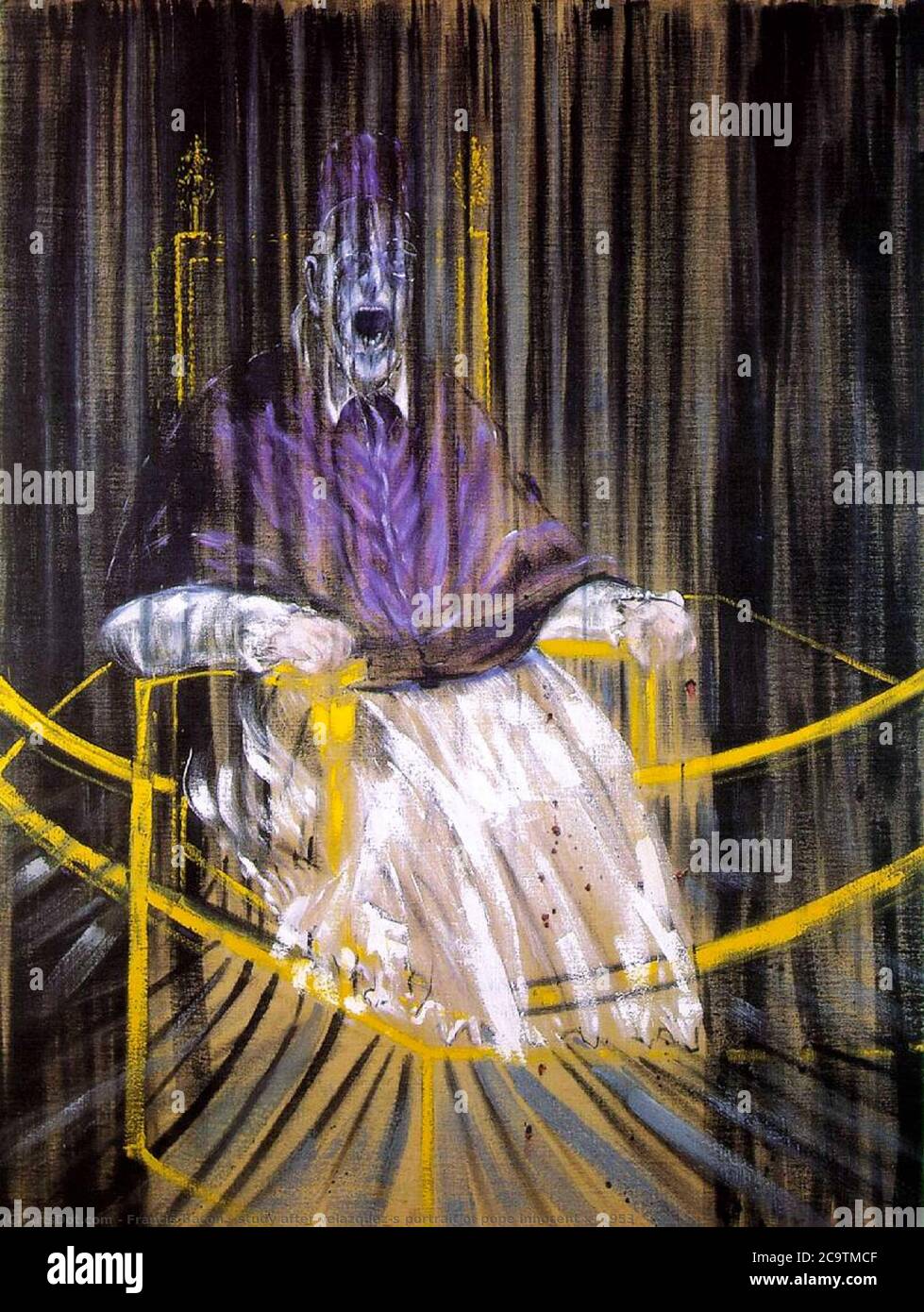Francis Bacon's work has long been a subject of fascination for art enthusiasts and critics alike. Among his many masterpieces, his reinterpretation of Diego Velázquez's Portrait of Pope Innocent X stands out as a haunting and visceral exploration of human emotion and psychological depth. This iconic piece not only pays homage to one of the greatest portraits in art history but also introduces a modern twist that challenges viewers to reconsider the nature of power, suffering, and humanity.
Bacon's ability to transform a classical portrait into an expression of raw emotion is unparalleled. By reimagining Velázquez's serene depiction of Pope Innocent X, Bacon delves into themes of vulnerability, fear, and existential angst. His use of distorted forms and intense colors creates a sense of unease, inviting the audience to confront uncomfortable truths about the human condition. This article explores the intriguing story behind this masterpiece, shedding light on its creation, influences, and lasting impact on the art world.
Reinterpreting Velázquez: A Modern Twist
Francis Bacon's Study after Velázquez's Portrait of Pope Innocent X is a bold reinterpretation of Diego Velázquez's 17th-century masterpiece. While Velázquez's original portrays the Pope with dignity and authority, Bacon's version presents a more unsettling image. The figure appears to be screaming or in distress, capturing a moment of emotional turmoil that resonates deeply with contemporary audiences. This transformation highlights Bacon's interest in exploring the darker aspects of human experience.
Bacon's fascination with Velázquez's work began early in his career. He admired the Spanish painter's technical skill and ability to convey the essence of his subjects. However, rather than replicating Velázquez's style, Bacon sought to create something entirely new. By distorting the facial features and using vibrant, clashing colors, he transformed the serene Pope into a symbol of anguish and vulnerability. This departure from tradition reflects Bacon's commitment to pushing the boundaries of artistic expression.
The choice of subject matter was deliberate. Pope Innocent X, known for his controversial reign, provided a rich canvas for Bacon's exploration of power and its consequences. Through his painting, Bacon questions the nature of authority and the toll it takes on those who wield it. The result is a powerful commentary on the complexities of leadership and the inevitable fallibility of human beings.
A Visually Intense Experience
Bacon's portrayal of Pope Innocent X is characterized by its intense visual impact. The distorted face, rendered in vivid hues of red and purple, evokes a sense of pain and suffering. The Pope's mouth appears to be wide open, as if emitting a silent scream, while his eyes seem to stare directly at the viewer. This combination of elements creates an almost overwhelming sense of emotional intensity that draws the audience into the painting.
The use of color plays a crucial role in conveying the painting's mood. Bacon employs a palette that contrasts sharply with the muted tones of Velázquez's original. The bright, saturated colors heighten the sense of drama and urgency, emphasizing the emotional turmoil depicted in the figure. Additionally, the texture of the paint adds another layer of complexity, with thick brushstrokes creating a tactile quality that invites closer inspection.
This visceral experience is further enhanced by the composition of the painting. The Pope is positioned centrally, isolated against a plain background, which serves to focus attention on his tormented expression. The absence of any contextual details forces the viewer to confront the raw emotions portrayed, making it impossible to look away. In this way, Bacon achieves a profound connection between the artwork and its audience.
Influences and Legacy
Beyond Velázquez's influence, Bacon drew inspiration from other sources, including Sergei Eisenstein's film The Battleship Potemkin. A still from the movie depicting a screaming woman inspired the expression captured in the Pope's face. This interplay between different mediums underscores Bacon's innovative approach to art-making and his willingness to incorporate diverse influences into his work.
The legacy of Study after Velázquez's Portrait of Pope Innocent X extends far beyond its initial reception. It has become one of the most recognizable images in modern art, celebrated for its ability to evoke strong emotional responses. Its influence can be seen in various artistic disciplines, from painting to photography, as well as in popular culture. For example, the Des Moines Art Center, which houses a notable collection of modern art, includes this piece among its treasures, drawing visitors from around the world.
Bacon's decision to frame his works in gold, echoing traditional portrait conventions, adds another dimension to their interpretation. By adhering to this practice, he acknowledges the historical context of his subject while simultaneously subverting expectations through his radical reinterpretation. This duality encapsulates the essence of his art—respectful yet revolutionary, rooted in tradition yet boldly forward-thinking.

